In the archives: Tokyo Olympics 1964

The 2020 Olympics Games in Tokyo, Japan have been postponed this year due to the Covid-19 pandemic. Here we look back through our photo archive to 1964, when Tokyo last hosted the event.
The following are quotes from Hal Buell who was head of AP Photos for 25 years and worked at numerous Olympic Games for AP, including Tokyo 1964.
“Tokyo was easily the best organized Olympics I covered. [The] Japanese had it organized to the minute...events rolled along as efficiently as the Japan train system. “
Prince Tsunenori Takeda of Japan, left, who is to be president of the 1964 Olympic Games in Tokyo, and M. Gurnet, hold out the official poster for the next Olympics in Nice, France, June 14, 1962. (AP Photo)
The five-ring Olympics symbols stand out in the jumble of bright lights in downtown Tokyo on Dec. 16, 1963. The signs dot Tokyo as the host city prepares for the 1964 Olympic summer games. (AP Photo)
Preparations for the opening ceremony of the 1964 Tokyo Olympics. (AP Archive)
“Ahead of the games we had to make the rounds of every venue to select the spot that AP staff would use to cover specific events. That led to negotiations with the Japanese organizers who wanted to insure that photographers didn't go crazy to get THE picture.
Japanese in uniforms were helpful at each venue, but at the same time there was little chance for squeezing just a bit more freedom from assigned positions.“
Japanese torchbearers of the Olympic flame relay team run through the rain on their way to the Olympic Stadium in October 1964 in Tokyo, Japan. (AP Photo)
Japanese runner Yoshinori Sakai carries the Olympic Torch during the opening ceremonies of the 1964 Summer Olympics in Tokyo, Japan, on Oct. 10, 1964. Sakai was born in Hiroshima on Aug. 6, 1945, the day the nuclear weapon destroyed the city. (AP Photo)
Vapor trails from Japanese Air Force jets form the Olympic emblem of five rings above the National Stadium in Tokyo during the official opening of the XVIII Olympiad, on Oct. 10, 1964. (AP Photo)
Gymnasts performing during the Olympics opening ceremony at the Tokyo National Stadium in Tokyo, Japan, Oct. 10, 1964. (AP Photo/Mitsunori Chigita)
A view during the opening ceremony of the 1964 Summer Olympics in Tokyo, Japan, Oct. 10, 1964. (AP Photo)
“Olympic coverage during that period was a massive job that involved some 20 photographers, 10 or more editors, 15 or so darkroom staff plus messengers, local fixers and more. It was the AP's turn at Tokyo to manage IOPP, the International Olympic Picture Pool... IOPP required as much preparation and planning as was required for AP.“
Three members of the U.S. Olympic track and field team look over a map of the Olympic Village in Tokyo, Oct. 4, 1964. From left are: William Mills of Pine Ridge, S.D., 10,000 meters; Tom O'Hara, Chicago, 1,500 meters; and Vic Zwolak of Wilmington, Del., 3,000-meter steeplechase. (AP Photo/Charles Knoblock)
The German gold medal winners of the men's coxed fours Summer Olympic Games rowing event, from left to right: Peter Neusel, lying exhausted in the boat; Bernhard Britting; Joachim Werner; Egbert Hirschfelder and coxswain Juergen Oelke on Thursday, Oct. 15, 1964, at the Toda boat course, north of Tokyo, Japan. (AP Photo)
“One of the peculiarities of the Olympics is that every Gold Medal winner is a big story for publication in the home country of the winner. And every Gold had to be handled on a bulletin basis. That kept photographer-messenger-darkroom handling-editing-transmission constantly in bulletin mode.
The games were an editor's challenge: each event had to be covered carefully because some AP member or subscriber had their special need, their special athlete, their winning medals. Literally thousands of prints were processed and sent on their way to home bases around the world.”
Sharon Stouder of the USA in lane 3 finishing a stroke ahead of Ada Kok of the Netherlands in lane 4, to win the women's 100-meter butterfly stroke swimming race at the 1964 Tokyo Olympics. (AP Photo)
Japan vs. US women's Volleyball match during the 1964 Summer Olympics in Tokyo on Oct. 11, 1964. (AP Photo)
An official raises the arm of boxer Joe Frazier after he defeated Germany's Hans Huber, left, in Olympic heavyweight finals on Oct. 23, 1964 in Tokyo, Japan. (AP Photo)
“In many ways coverage of the Olympics was a test of stamina. The Games lasted three weeks -- there was the week of arrivals to cover -- and that could take staff to anywhere in the city. The events started at 7am and the day's final events ended near midnight...Not much time to enjoy the ample pleasures of exotic Tokyo though most, me included, managed a night or two in "town" outside the Olympic village.
...[of] all the stories I covered for AP over 40 years, Olympics rated high for challenge and enjoyment. “
AP Photo staffers at the Tokyo Olympics. Front to back: Yasuko Ichino, secretary; Arnold Fehse, Wirephoto technical supervisor; Dick Strobel, photo editor; George Imai, Tokyo AP-WWP chief who conducted the Olympics photo pool; Ray Jefferies, photo deskman; Hal Buell, photo projects editor; Sam Jones, photo editor and Eddie Adams, photographer. (AP Corporate Archives)
A view of the AP Olympics photo room in Tokyo which was underneath the stands of the National Stadium. (AP Corporate Archives)
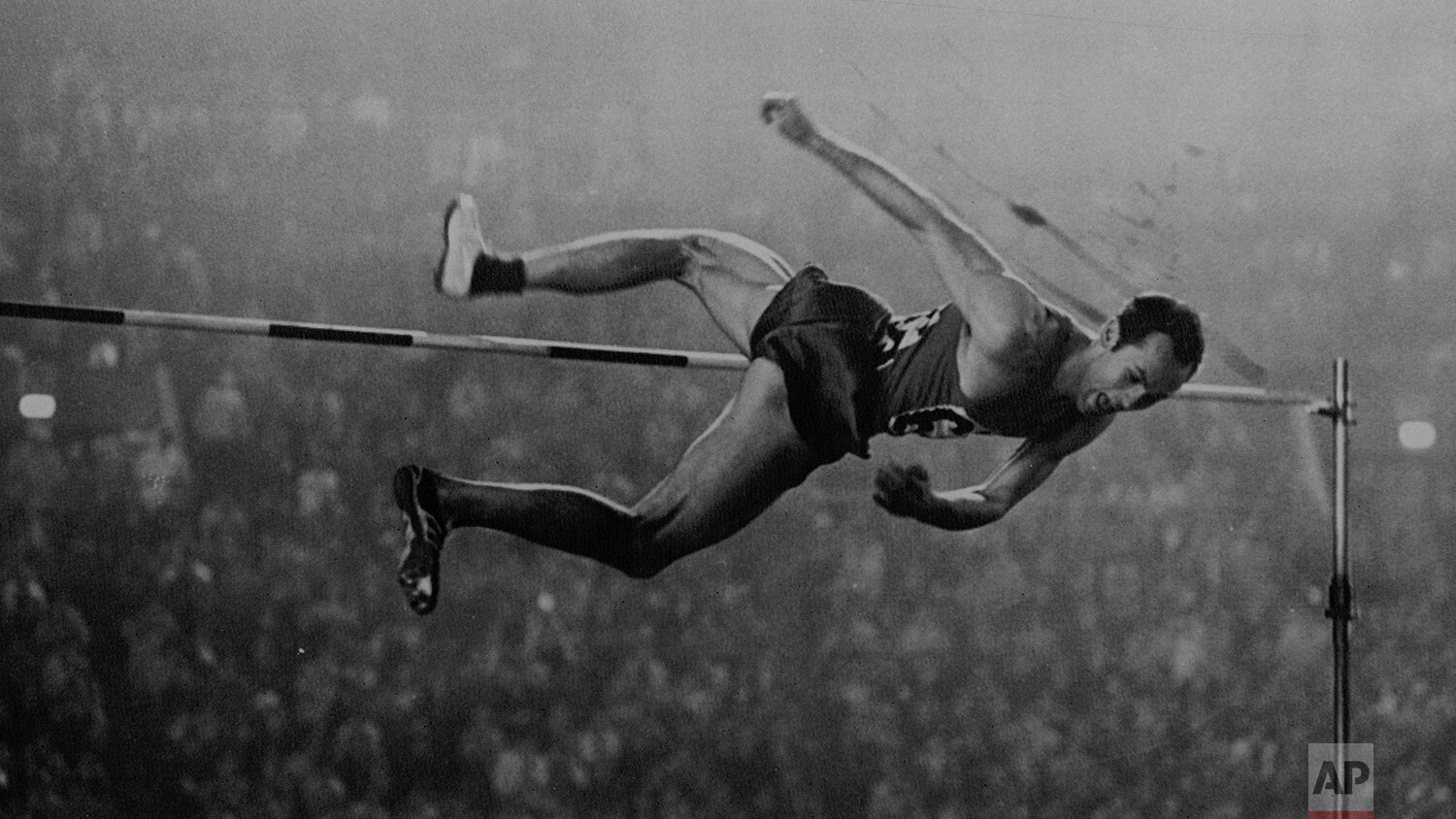
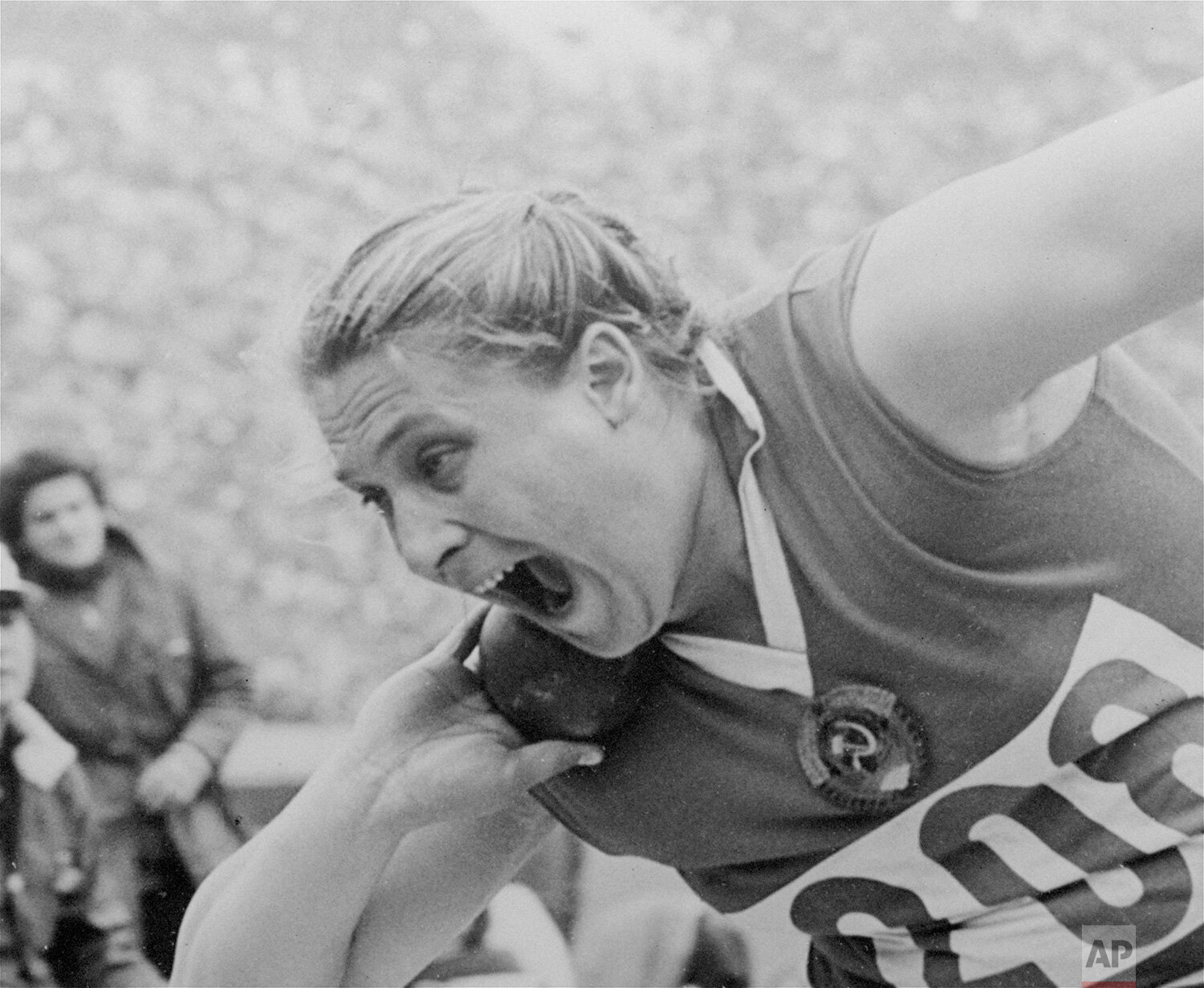
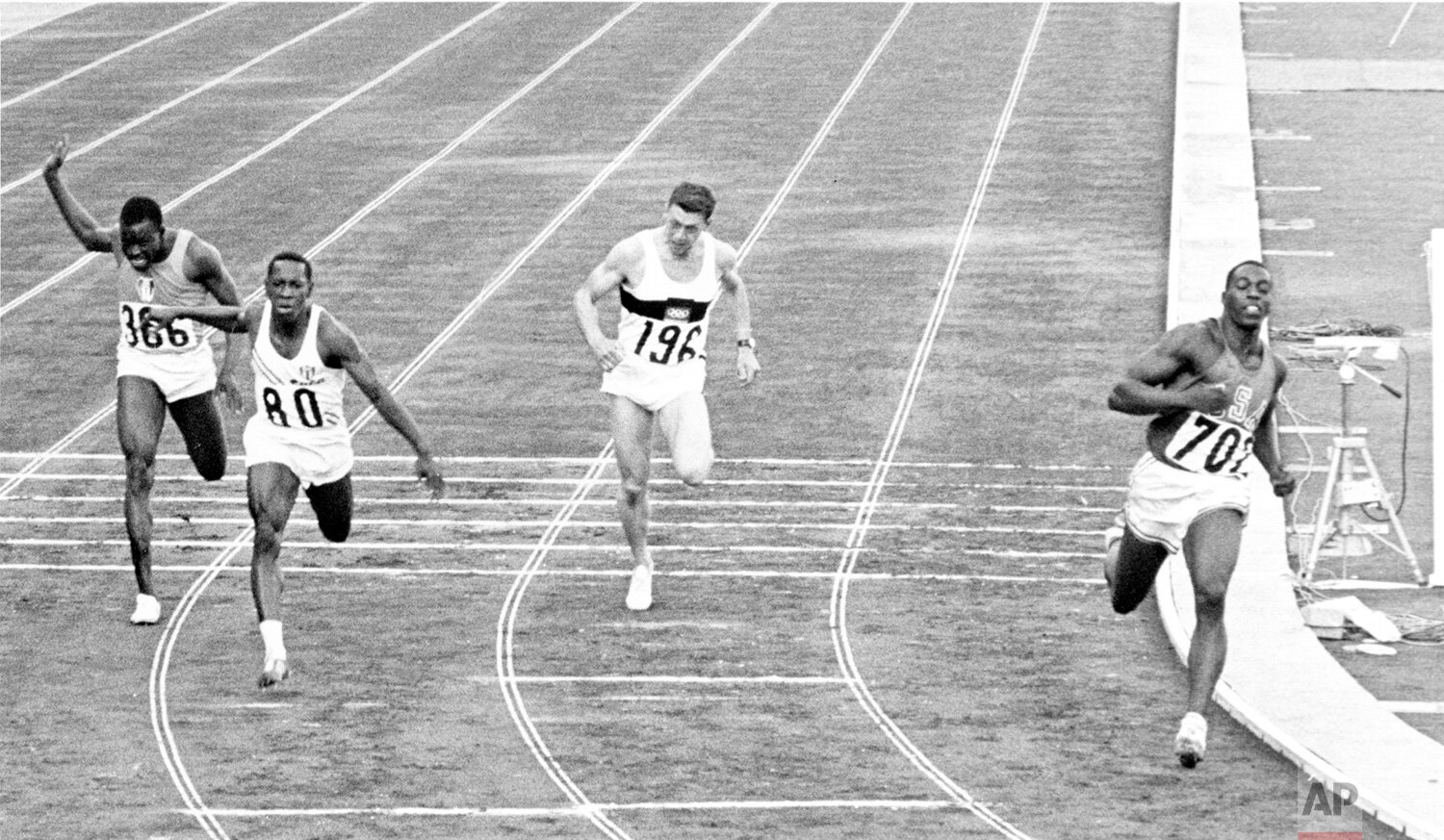
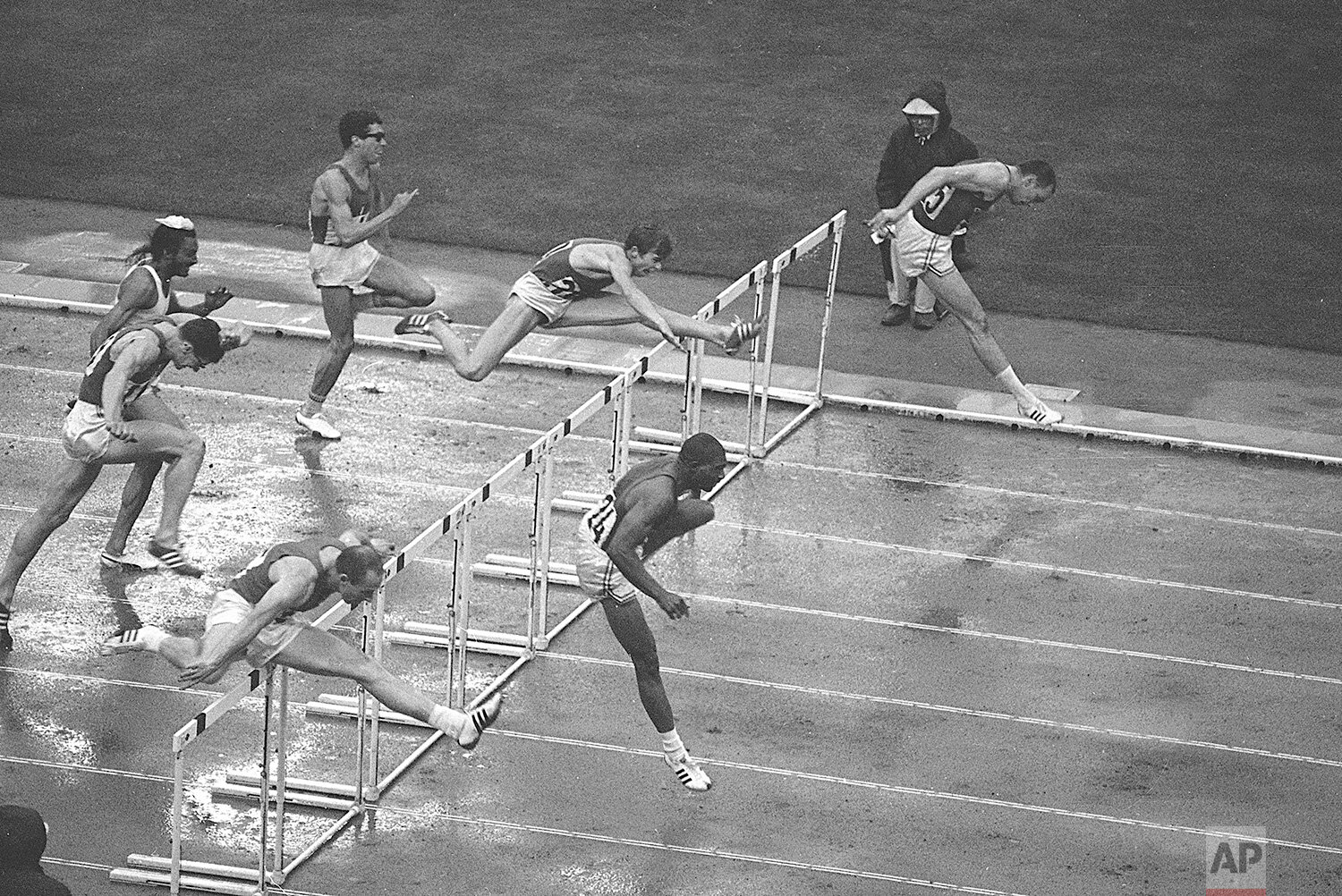
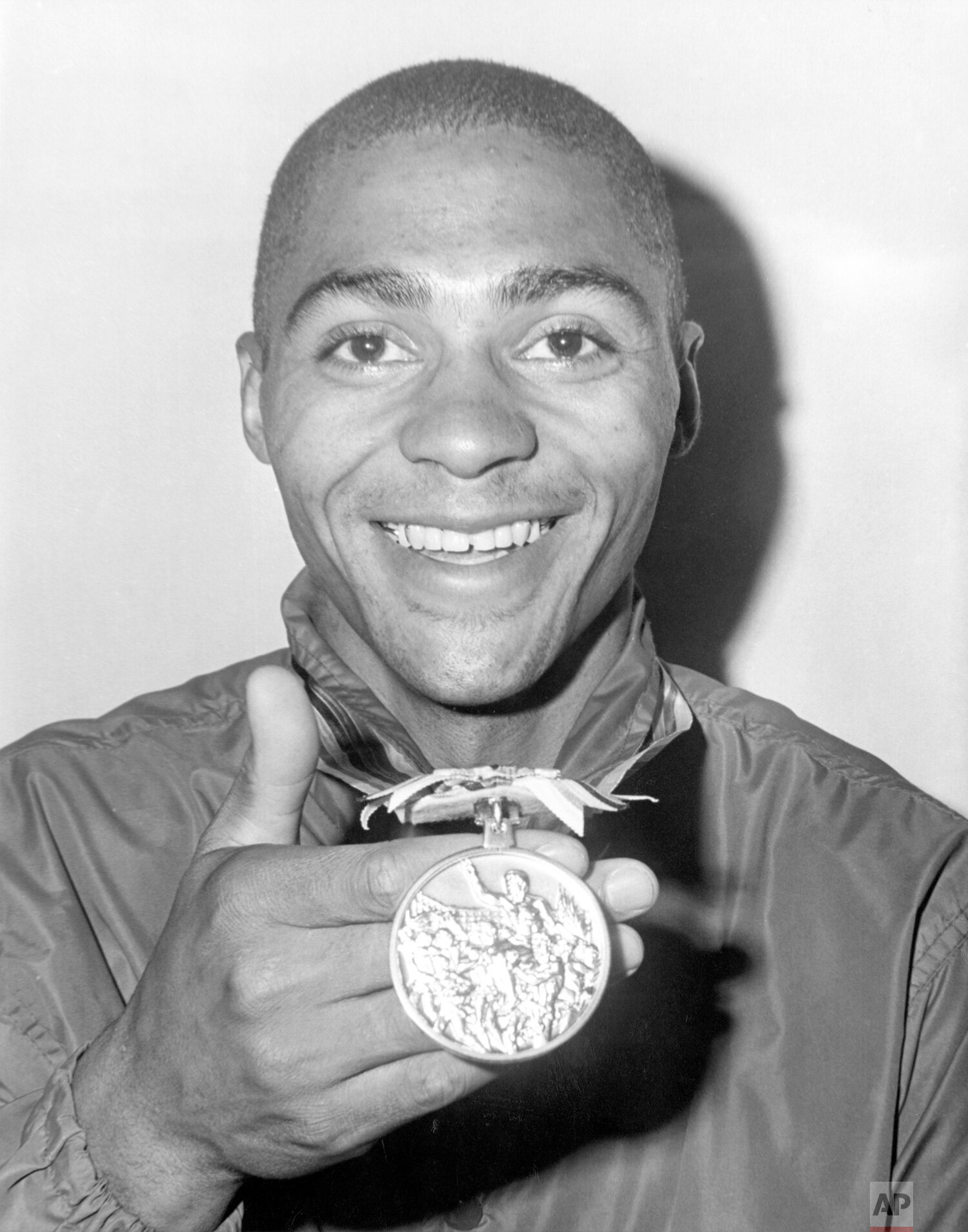
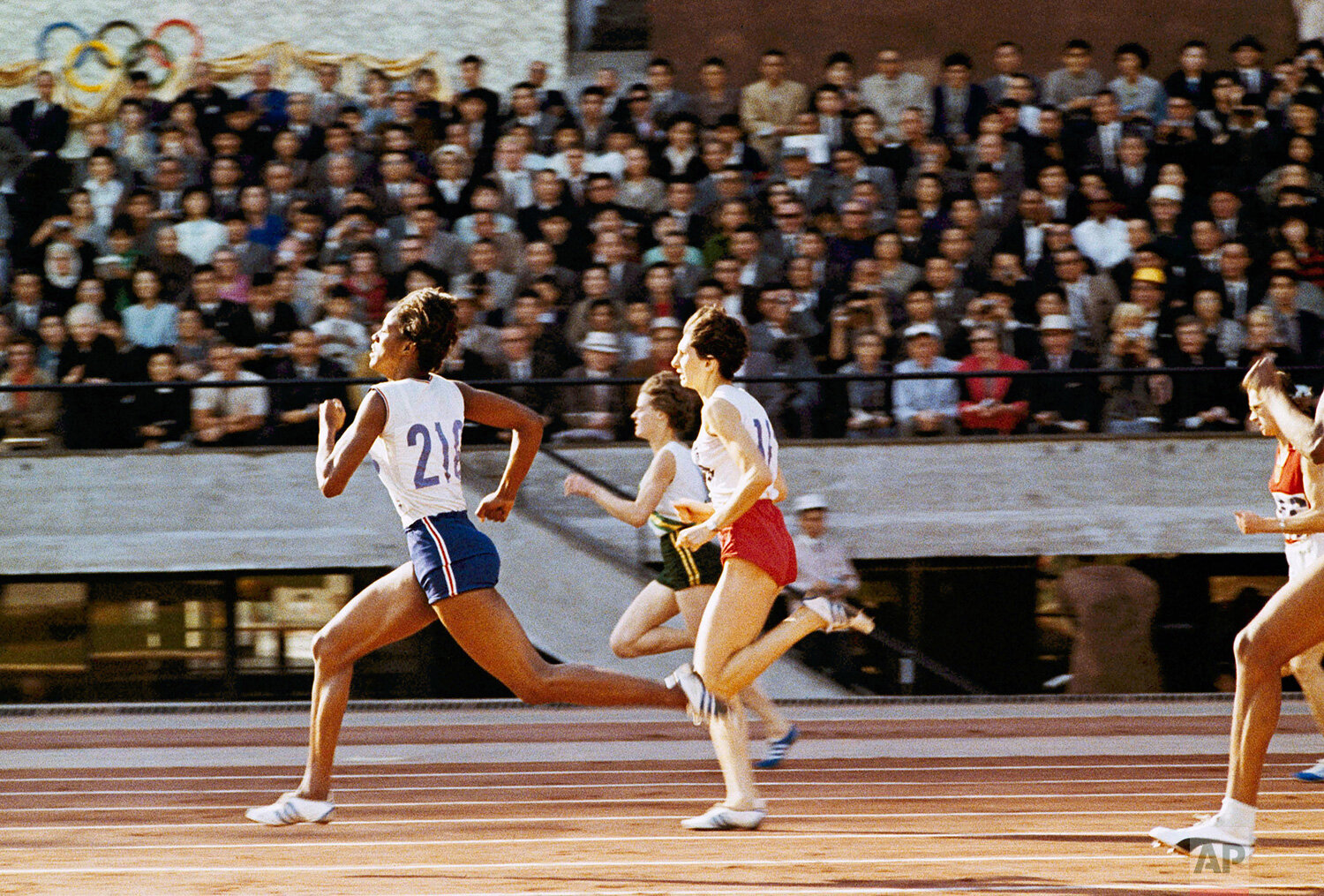
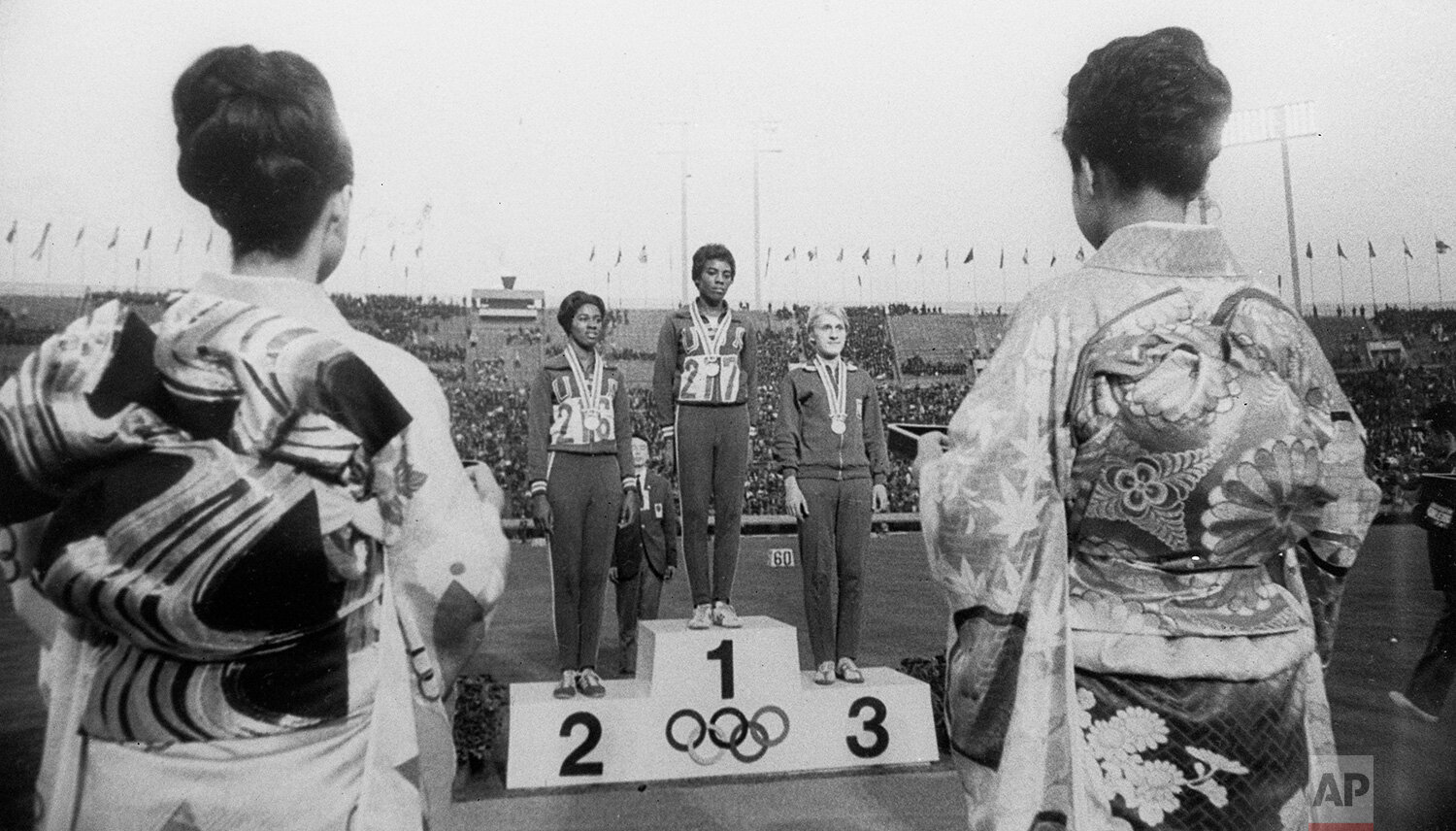
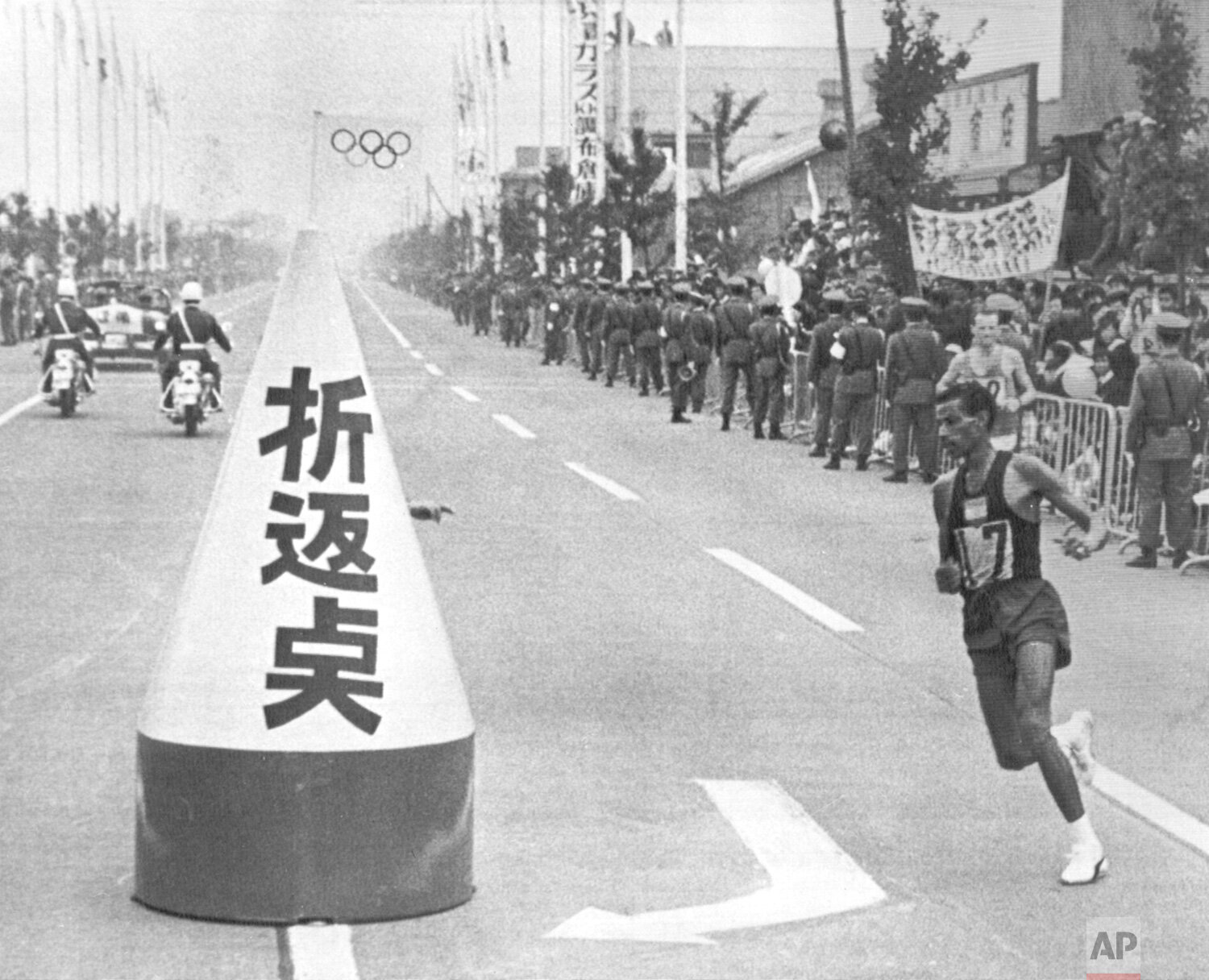
German athlete Willi Holdorf clears the bar in the pole vault competition on Oct. 20, 1964, at the Summer Olympic Games decathlon event in Tokyo, Japan. (AP Photo)
Marine Lt. Billy Mills throws his arms into the air as he hits the finish line to win a gold medal for the U.S. on Oct. 14, 1964, in the Olympic 10,000 meter run in Tokyo. Mills was considered far out of his class in the event. (AP Photo)
German athlete Willi Holdorf (264) and fellow athlete Hans-Joachim Walde (263) lie on the pitch after they finished the 1500 meters run, on Oct. 20, 1964, at the Summer Olympic Games decathlon event in Tokyo, Japan. (AP Photo)
Vera Caslavska of Czechoslovakia performs on the parallel bars during the women's Olympic individual gymnastic classification in Tokyo, in October 1964. She won the gold medal in the event. (AP Photo)
Vera Caslavska, of Czechoslovakia waves acknowledgment after winning her gold medal in the long-horse vault gymnastics event at 1964 Tokyo Olympics on Oct. 22, 1964. Larisa Latynina, of the USSR, center, stands with Birgit Radochla, of Germany as they tied for second place. (AP Photo)
Anton Geesink of the Netherlands and Aiko Kaminaga of Japan in heavyweight judo action at the 1964 Summer Olympics in Tokyo, Japan, on Oct. 23, 1964. (AP Photo)
The gold medal soccer game between Hungary and Czechoslovakia at the 1964 Tokyo Olympics on Oct. 23, 1964. Hungary won the game 2-1. (AP Photo)
A basketball game between the USA and Soviet Union during the 1964 Summer Olympics in Tokyo, Japan, on Oct. 23, 1964. (AP Photo)
Osamu Watanabe (top) of Japan and Raul Alberto Romero of Argentina in action during the freestyle featherweight Summer Olympic Games wrestling event, in Tokyo, Japan on Oct. 13, 1964. (AP Photo)
The German equestrian team line up at the 1964 Olympic Games in Tokyo, Japan on Oct. 24, 1964. (AP Photo)
A view of the final day of the 5.5 class yachts racing on Oct. 20, 1964, in Sagami Bay during the Summer Games. In this event Australia won gold, Sweden silver and the USA took bronze. (AP Photo)
Closeup of the flame cauldron at the Tokyo Stadium, at the 1964 Olympic Games in Japan. (AP Photo)
Text extracts from Hal Buell.
The AP Corporate Archives contributed to this blog.

